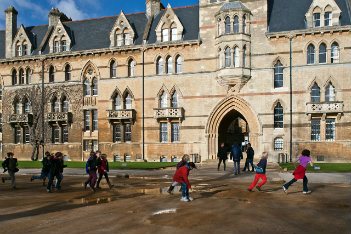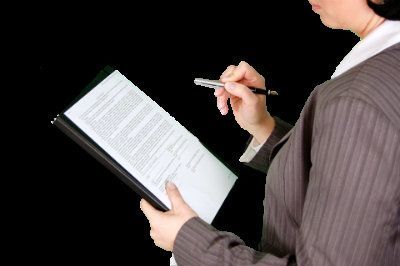If you or your child faces a slip and fall injury on school premises, then you have certain rights if you are able to  establish the school’s liability. To make sure that students have proper protection from slip and fall injuries, teachers and school administrators have a legal duty of care. This duty of care responsibility means that the school must do everything possible to protect its students from any harm, death or injury.
establish the school’s liability. To make sure that students have proper protection from slip and fall injuries, teachers and school administrators have a legal duty of care. This duty of care responsibility means that the school must do everything possible to protect its students from any harm, death or injury.
What Makes School Premises Safe?
The school environment must be safe for children to use at all times under the following guidelines:
- Any dangerous conditions or situations must be repaired in a timely manner.
- Students must be properly supervised on school premises, buses, and grounds.
- Any extracurricular and school-sponsored activities off school grounds require adequate supervision.
When a school is unable to protect students from predictable harm, the law states that it operated negligently. This negligence makes it liable for any damages and injuries faced by the student. A school’s liability includes, but is not limited to:
- Medical bills
- Chiropractic bills
- Surgery bills
- Therapy bills
- Medication out of pocket expenses
- Crutches
- Hospital parking fees
- Slings
- Lost wages (if the child had a part-time job)
- Pain and suffering of the student
This responsibility is ongoing for the entire duration that students are on school properties. If a student is injured  because of school negligence like faulty handrails or wet floors, the family should not have to absorb the costs of
because of school negligence like faulty handrails or wet floors, the family should not have to absorb the costs of
medical care because of the injuries. Schools operate in similar roles to property owners, therefore, claim damages can be brought against them if the injury occurred because of some danger on the school premises.
What Is In Loco Parentis?
In Loco Parentis is a Latin phrase that means ‘in place of a parent.’ This legal doctrine applies to teachers and school authorities. This essentially means that when a child is in the school or away at a school event, the teachers, and school authorities have the same duties and responsibilities as the parents of students.
While in loco parentis gives teachers and school authorities freedom for supervising students, it also holds them liable for any slip and fall accidents and injuries sustained under their supervision. The doctrine can be subject to interpretation with each accident weighed separately based on individual circumstances. To establish whether the teacher acted prudently under the circumstances, the court will consider several factors:
- Did the teacher and school have a proper supervision plan for student protection?
- Was the student’s injury predictable and could it have been prevented with better care?
- Did the teacher or school administrator know of the dangerous condition in advance?
- Did the teacher and school take enough care to ensure no injury took place to the students of the institution?
Keep in mind that not all accidents that occur on school premises are the result of negligence. Sometimes slips and falls can take place, despite best efforts from teachers and school administrators. When teachers and school administrators do everything possible to protect students, courts may hesitate to pursue a negligence case against them.
There is no rule to establish that all slip and fall accidents will result in successful negligence claims against schools. The court will take all evidence and witness statements into account before ruling in favor of the school or student based on every individual situation.
Premises Liability Lawsuits Against Schools
Parents on behalf of children undertake most premise liability lawsuits against schools, but there are some instances where even adults file negligence claims against schools for slip and fall accidents.
In February 2016, a man from New Jersey filed a lawsuit in the district court against Newtown’s Council Rock School District citing negligence because of dangerous snow and ice accumulation leading to injury and is seeking damages of over $150,000.
In another incident, a softball player and student is suing the Worcester Polytechnic school over a hazing incident that led to a fall, leaving her injured permanently.
Proving premises liability against schools requires sufficient evidence to prove that the school acted negligently. Just like property owners, schools are also responsible for student safety on a daily basis. Any spills, floor defects, and damaged staircases must be immediately addressed to ensure the safety of all students on the property. If a school fails to address a dangerous condition, then it could lead to liability if the child has suffered injuries. In many cases, school districts may be responsible for keeping surroundings free from damage. Failure to do so may result in negligence claims not only against the school but against the entire school district.
Proving Premises Liability For A School Premise Slip And Fall Accident
If you are looking to pursue a slip and fall liability case against a school, you must be able to prove negligence by gathering as much evidence as possible. Your evidence should have enough proof to show that the school failed to handle a dangerous situation correctly. You must also prove that the slip and fall accident is directly responsible for your child’s injuries.
Witness Statements
Witness statements are usually crucial when you’re looking to prove a negligence claim against the school. People who were around at the time of the accident can describe the incident in detail. You may even need to get statements from school nurses describing the extent of the injuries, but this may prove challenging as most of them are hesitant to do so.
Pictures
A picture creates a tremendous impact because it helps your case of negligence against the school authorities. But you must ensure that you capture these images quickly with a date and time stamp on your camera for adequate proof, in case the school decides to fix the problem while you pursue the case. For instance, a broken tile in the school’s corridor can contribute to your child’s accident, but it can also be fixed by the time you reach the court. Taking pictures immediately will equip you with sufficient proof of your negligence claim against the school.
Damages From The Fall
Pictures and witness statements are important from an evidence point of view, but your child’s slip and fall injuries should have resulted in medical bills and out of pocket expenses for you to have a case. You cannot sue the school just because they were negligent. You must hold on to all medical records of your child’s accidents because you will be required to present them to the court during the lawsuit against the school.
Do Public Schools Have Different Liability?
If you are suing a public university or school, you must first file a tort claim with the city and school district before you can sue in court. This involves filling out specific forms before you can proceed to sue the school. Public schools are safeguarded by government immunity and can be sued under precise conditions only. In Pennsylvania, these conditions are detailed in “The Political Subdivision Tort Claims Act.”
When your child suffers from a slip and fall accident in school, make sure you follow these steps:
- Report the slip and fall accident immediately to the school authorities.
- Fill out any forms and reports to detail the injury.
- Get names and statements from all witnesses present at the scene.
- Take pictures of the accident scene to prove negligence.
- File your claim with your local court of law against the school.
A slip and fall accident on a school property can be tricky. You must ensure that you have a solid case before suing the school.
